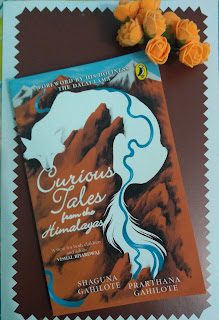Book Review
A short preface before I get down to the review
NA D'Souza, the author worked for about 25 years in connection with the Sharavati hydroelectric project and has seen the Linganamakki Dam come into existence. He has seen people dismantling homes, loading their families into lorries and carts migrating to lands allotted to them, deserting an identity and life they knew all along for generations. His keen and upclose observations of displacement and loss that development spurs to produce gains for a few are poured out into this novella.
Development-induced destruction is the central theme in this novella Dweepa and his many other books that include Mulugade (submersion) and Oddu (Dam/Barricade). He is known in Kannada literary circles as 'submersion' writer for he has exclusively focussed on people and families affected by big dams.
Dweepa, first published as a book in 1978 though written years back, describes an insider's view of what it means to live amidst fear of being marooned. The river Sharavati, bound by a dam, the rain - river's companion form central characters in the book. The chapters are named after stars that influence different phases of monsoon. The dam, a man-made evil not only threatens livelihood but creates deep chasms in human relationships.
The book was made into a movie too by Girish Kasaravalli and won President's Gold Medal in 2006. The translation into English is by Susheela Punitha, a retired professor of English, Mount Carmel College.
The translator's note elaborates the challenges translators face and asserts the importance of the process. The Oxford Novella series editor vouches to bring literary excellence bundled with socially relevant themes to the reader's table.
The review
Five families in a small village on the banks of river Sharavati - Hosamanehalli find themselves living in constant fear of submersion due to Sharavati hydroelectric project and construction of Linganamakki Dam. Two landlords and their labourers move to government allotted land in nearby towns in haste, content with compensation available.
Ganapayya, his wife Nagaveni and his ailing father Duggajja become the sole human inhabitants of the village. While cultivation of areca nuts and paddy in their lands engrosses them initially, the dread of loneliness, the fear of rising waters leaving them marooned in Hosamanehalli soon engulf them completely, damaging their lives irrevocably.
The river Sharavati is a principal character in the story, first free to flow her natural course, only to get blocked later, to get restless, swell in size and get unpredictable; quite like a human being who wriggles and gets violent under a loathsome, compelling force. The monsoon rains along with whistling winds are her companions instilling more power in her to break free from bondages the dam impose upon her.
The chapters are named after stars that influence different phases of monsoon - Krithika and Rohini where grey, overcast skies urge man to prepare for a rough monsoon period ahead; Mrigashira and Aridhra describe rain's unabated fury, it's only intent to soak the parched earth until verde green.
Ganapayya harbors many untold worries that turn him bitter and taciturn with time. This affects his relationship with his wife which only worsens with arrival of Krishnayya, an orphan/labourer who grew up in Nagaveni's house who comes to lend a helping hand with farm work.
What happens to Ganapayya and his family, the village? Do they withstand the onslaught of river that monsoon? What havoc does the huge concrete dam wreak? To know the answers, read this perfectly crafted book with an end so befitting, well translated, rendered with elements that show how man is closely knit with nature and how his intent to often alter it affects him in ways more than one causing unfathomable damage with time. HIGHLY RECOMMEND this read!!





